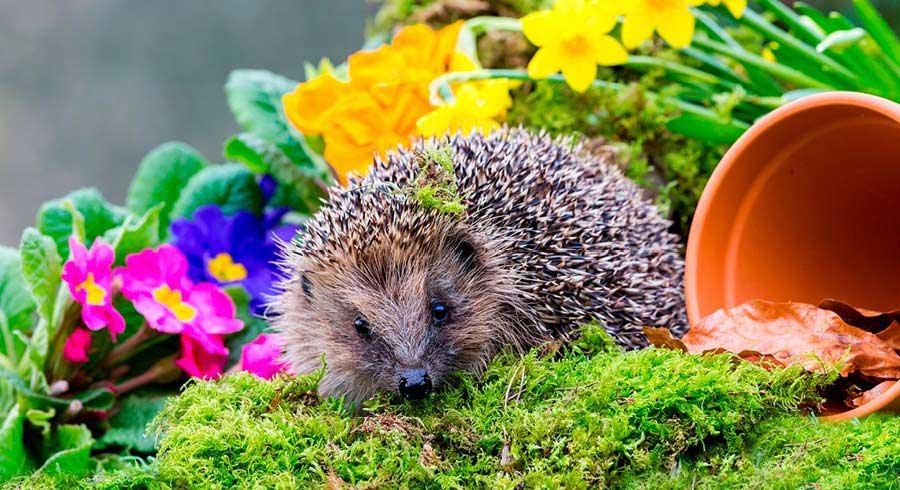Whether it is bees to pollinate the flowers, or frogs to help take care of some of those more pesky garden visitors, there is plenty of wildlife that can help benefit your garden. Here are a few ways to help the wildlife feel more welcome in your garden.
Table of Contents
Create a Pond
It doesn’t necessarily have to be a big pond to attract wildlife to your garden. You can even use an old trough or butler sink to create a water feature. If you do go for a bigger pond though, make sure that there are branches or stones for certain wildlife to be able to get in and out of the pond easily. Add water lilies to help prevent it from becoming stagnant.
One of the benefits of having water in your garden is that it will attract frogs, and they are excellent pest eaters. They will eat up the likes of snails, slugs and other insects that may otherwise damage your plants and vegetables in your garden. Ponds also attract dragonflies, who are another great eater of unwanted pest insects.
Grow Flowers for Pollinators
Growing the right flowers will help attract bees and butterflies into your garden, both of which are fantastic pollinators. Plants such as alliums and geraniums are popular with bees, and butterflies love buddleias and lavender. By attracting bees and butterflies into your garden to pollinate, they will in turn give you more flowers and plants.
Feed the Birds
Birds are another very important part of your garden’s ecosystem, so be sure to make room for birds. Have a bird box or a bird table where you can leave food for them. Get some wild bird seed mix such as that available from Little Peckers and watch the birds flock to your garden. There you can find seeds for the winter and high protein fat balls for the spring. Place your feeder near a bush or tree to provide the birds with some shelter from bigger predators such as cats and foxes.
A Gap for Hedgehogs
Another valuable pest control for your garden is a hedgehog. They will eat slugs and snails too, as well as other insects, protecting your plants from disease and pest infection. The best way to allow these cute little creatures into your garden is to make sure there is a gap in your fence that they can get through. You can even create a little hedgehog house for them to attract them into your garden. Just remember that the popular belief of leaving milk out for them is not advisable. You can leave them cat food to eat, or even purchase hedgehog food if you do find they like to visit your garden.
Build a Bug House
Building a bug house or an insect hotel is an easy and free way of attracting small wildlife into your garden. It can even be fun for the kids to get involved too. Go for a walk and collect lots of things like pinecones, twigs, stones, and dead seed heads. Then create a little area made up of all these things to make a little house for spiders and beetles.
Have a Compost Bin
Making and using your own compost not only enriches your soil, but it also makes a great habitat for worms, woodlice, frogs and slow worms. You don’t necessarily have to buy a compost bin, since you can easily make one out of pallets. Adding any food scraps including bread, eggshells and tea bags, along with dead leaves and other garden waste is a great way of reducing waste and promoting healthier plant growth in your garden. It’s a win-win situation.
Forget the Weeding
Take a little break from weeding or mowing once in a while and allow plants such as daisies and buttercups to grow up through your lawn. They provide a great source of food for many insects including butterflies and moths, and they flower for a long time. Even less pretty plants like nettles can provide food for wildlife, so don’t feel like you have to cut them back continuously.
Plant a Fruit Tree
If you have the room in your garden, why not try planting a fruit tree such as a wild cherry tree? The flowers, fruit and leaves of a fruit tree feed bees, caterpillars, mice as well as birds. You might even get a look in yourself. Having a tree in your garden can also benefit you by providing shade and reducing noise.
As you can see, there are so many benefits of having wildlife visit your garden. They help your flowers and plants grow and act as a vital part of the garden’s ecosystem. Why not try some of the things above and see if you can get wildlife to visit your garden?
